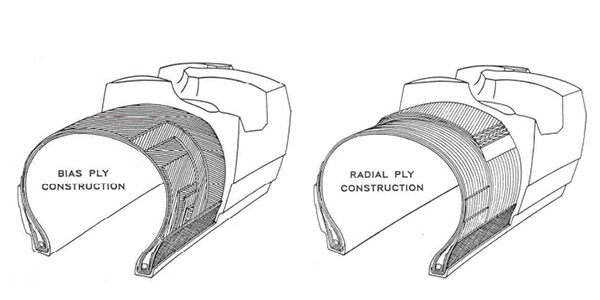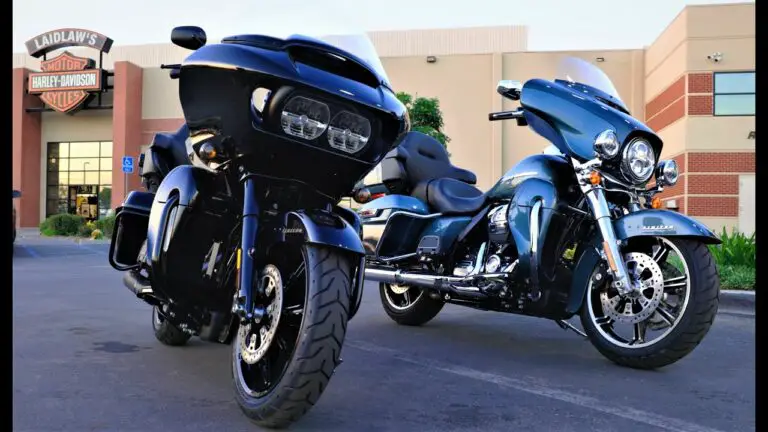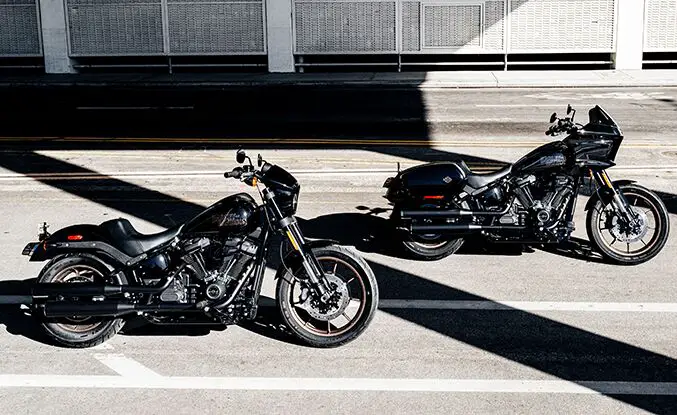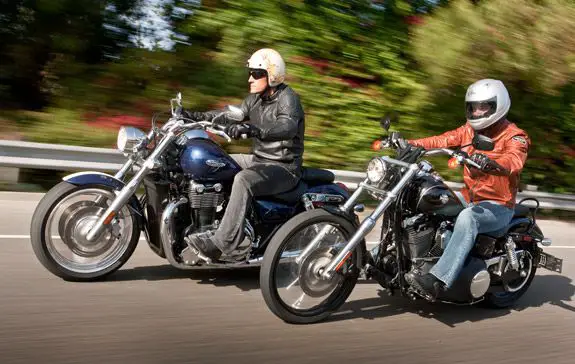The Fat Boy and Fat Bob are both Harley-Davidson motorcycles known for their muscular looks and powerful rides. The Fat Boy features a signature softail design, while the Fat Bob showcases a more aggressive, performance-oriented style.
Choosing between the Harley-Davidson Fat Boy and Fat Bob depends on your personal riding preferences. Riders gravitate towards the Fat Boy for its classic, laid-back cruiser appeal with solid-cast disc wheels and a chunky front end. In contrast, the Fat Bob draws a crowd that favors a bolder aesthetic and a more dynamic riding experience, thanks to its inverted front forks and dual disc brakes.
Both bikes stand out in the Harley-Davidson lineup for their robust engines and distinctive designs. Deciding on one means considering aspects like handling, comfort, and overall look—factors that resonate differently with individual riders. Whether cruising the country roads or tackling the urban jungle, your choice will embody your attitude on the road.
Introduction To The Harley-davidson Heavyweights
Harley-Davidson bikes symbolize freedom and power. Among these, the Fat Boy and Fat Bob stand tall. Each bike tells a story of American craftsmanship and biker culture. Let’s explore their world, their roar, and the roads they rule.
Overview of the Fat BoyOverview Of The Fat Boy
The Fat Boy is an icon in the motorcycle world. With its bold design and chrome-laden look, it grabs attention on the roads. Features like the solid-cast disc wheels add to its unique style. It offers comfortable rides with a powerful engine to back it up.
Overview of the Fat BobOverview Of The Fat Bob
The Fat Bob stands with a more aggressive stance. It boasts a performance-focused build. The upright riding position and dual exhaust give it a sporty edge. Riders love it for its nimble handling and modern features.
Historical Development of Both ModelsHistorical Development Of Both Models
The Fat Boy rolled out in 1990. It became a legend with its classic American style. The Fat Bob, first seen in 2008, brought a fresh update to Harley’s lineup. Both models evolved with better technology and refined designs. They echo Harley’s rich heritage and appeal to modern bikers.
| Model | Debut Year | Key Features |
|---|---|---|
| Fat Boy | 1990 | Chrome, solid-cast wheels, signature look |
| Fat Bob | 2008 | Aggressive design, dual exhaust, performance-oriented |
- Fat Boy: Timeless American classic.
- Fat Bob: Bold and sporty dynamo.
Design And Styling: Chrome Vs. Muscle
In the realm of motorcycles, the Harley-Davidson Fat Boy and the Harley-Davidson Fat Bob both present riders with distinct visual languages. The Fat Boy evokes the gleam of chrome and classic design, while the Fat Bob leans towards a raw, muscular aesthetic. Let’s dive into the details where chrome meets muscle.
The Aesthetic Appeal Of The Fat Boy
The Fat Boy’s design shouts nostalgia and sophistication. With its iconic solid disc wheels, the motorbike gleams from front to back. The use of chrome is generous, accentuating its majestic silhouette. Riders attracted to vintage vibes and shining metal find the Fat Boy irresistible.
- Signature Chrome Finish: An abundance of polished surfaces.
- Heritage-inspired Design: A nod to the classic era of motorbiking.
- Immaculate Details: Every part crafted for a premium look.
The Bold And Aggressive Design Of The Fat Bob
The Fat Bob takes a different path with a brawny stance. Its design elements scream aggression and power. Think dark finishes, blocky tires, and a squared-off headlamp. This bike does not just make a statement—it roars it.
- Matte Paint Jobs: Modern and understated finishes.
- Robust Tires: For a gripping, muscular look.
- Futuristic Headlamp: A distinctive, forward-thinking style.
Comparing Ergonomics And Comfort
Both bikes offer unique riding experiences, but ergonomics and comfort are crucial. The Fat Boy’s low-slung seat and easy-reach handlebars promise a laid-back cruise. The Fat Bob, with its upright riding position, offers a more dynamic ride.
| Aspect | Fat Boy | Fat Bob |
|---|---|---|
| Seating Position | Relaxed | Aggressive |
| Handlebars | Closer to the rider | Designed for control |
| Foot Pegs | Forward-mounted | Mid-mounted |
Performance And Riding Experience
Dive into the heart-pumping realm of Harley Davidson where two titans stand tall: the Fat Boy and the Fat Bob. Both bikes promise thrilling rides, but each takes a unique path to performance nirvana. Riders seek not just raw power but a symphony of speed, control, and comfort. We compare these two beasts to reveal which motorcycle might race ahead in your quest for the ultimate riding experience.
Engine Specifications And Output
The Fat Boy and Fat Bob roar to life with the iconic Harley engine’s rumble. Let’s compare their muscles under the hood:
| Fat Boy | Fat Bob | |
|---|---|---|
| Engine Type | Milwaukee-Eight 107/114 | Milwaukee-Eight 107/114 |
| Displacement | 1746 cc / 1868 cc | 1746 cc / 1868 cc |
| Horsepower | Varies with model | Varies with model |
| Torque | Full and punchy | Aggressive and lively |
Handling Dynamics And Suspension
A smooth ride marries agility in these mighty Harleys. They handle the road’s twists and turns with grace. Here’s how they stack up:
- Fat Boy: A solid cruiser with a comfortable stance. The suspension is tuned for a plush ride, ironing out rough patches on long journeys.
- Fat Bob: It’s the agile sibling, thanks to sportier suspension settings. The inverted forks and rear shock absorbers make for a dynamic, responsive ride.
Braking Systems And Safety Features
Both bikes pack sophisticated braking systems that ensure safety alongside exhilarating speed. Their stopping power is second to none.
| Fat Boy | Fat Bob | |
|---|---|---|
| Front Brakes | Dual pistons | Dual disc with four pistons |
| Rear Brakes | Standard | Disc with dual pistons |
| Safety Features | ABS, Security System | ABS, Security System |
Choose the Fat Boy for a laid-back, powerful cruise or the Fat Bob for a zestful, nimble journey. Both promise the hallmarks of Harley: prestige, power, and presence on the open road. Your choice hinges on your preferred dance with the tarmac.
Customization And Accessories
Harley-Davidson enthusiasts often turn their bikes into unique showpieces. The Fat Boy and Fat Bob models serve as two iconic canvases for customization. Riders personalize their bikes to reflect their style. From striking paint jobs to performance upgrades, options abound for these two beloved models.
Personalization Options For Fat Boy Enthusiasts
The Harley-Davidson Fat Boy stands out with its muscular look and solid disc wheels. Owners love to enhance their bike’s style and function. Below are popular personalization options:
- Custom Wheels: Trade the stock wheels for something that spins your story.
- Handlebars: From apes to drag bars, the sky’s the limit.
- Seats: Opt for comfort and cool with a range of custom seats.
Accessories like LED lights and custom exhausts also top the list. These not only enhance the look but improve the ride.
Customization Trends Among Fat Bob Riders
The Fat Bob’s aggressive stance attracts riders with a need for uniqueness. Customization trends for the Fat Bob include:
| Trend | Details |
|---|---|
| Paint Jobs: | Graphics or matte finishes make your bike stand out. |
| Performance Mods: | Upgrades like air filters and tuners increase power. |
| Suspension: | Enhance the ride with upgraded shocks. |
Aftermarket Support And Community
A strong community supports Fat Boy and Fat Bob riders. The aftermarket is rich with parts and advice. For both models, enthusiasts find:
- Online forums for tips and inspiration.
- Local clubs that host customization workshops.
- Plenty of vendors offering everything from decals to engine parts.
Engaging with the community can bring new ideas and friendships. The right accessories and personal touches make your bike truly yours.
Practical Considerations: Lifestyle And Usage
Choosing between the Harley-Davidson Fat Boy and Fat Bob isn’t just about style. Your lifestyle and how you plan to use the bike play a critical role. Think about your daily routines, the roads you will travel, and the distance you’ll cover. Ready to explore how each bike fits into different lifestyles? Let’s dive in.
Riding The Fat Boy: Cruiser Comfort For Long Distances
The Fat Boy, with its iconic design, offers a plush experience for lengthy rides. Consider the following:
- Relaxed seating position provides comfort for hours.
- Beefy tires and solid wheels tackle long stretches of highway.
- A larger fuel tank means fewer stops to refuel.
This bike is a fit for riders seeking leisure and adventure on open roads.
The Fat Bob: Urban Performance And Short Trips
Enter the Fat Bob. This bike shines in the city landscape. Key points include:
- Agile handling perfect for city navigation.
- Upright riding position aids in quick maneuvers.
- Shorter wheelbase allows for easy parking and storage.
Ideal for the urban dweller, the Fat Bob provides excitement in shorter bursts.
Maintenance And Ownership Costs
Let’s talk about what it takes to keep these motorcycles running smoothly.
| Fat Boy | Fat Bob | |
|---|---|---|
| Initial Cost | Generally higher | More affordable |
| Service Intervals | 5,000 miles | 5,000 miles |
| Fuel Efficiency | Lower | Higher |
| Insurance | May be higher | Often lower |
While the Fat Boy may attract higher insurance rates, its longer service intervals may save in maintenance costs. On the other hand, the Fat Bob, while cheaper to insure, might require more frequent care if used heavily. Your choice will affect your wallet throughout the bike’s lifetime.

Credit: www.youtube.com
Cultural Impact And Brand Legacy
The worlds of cinema and motorcycle culture blend remarkably with iconic bikes like the Fat Boy and Fat Bob. These legendary motorcycles have transcended the streets, carving their unique marks in various aspects of popular culture and within avid riding communities. Harley-Davidson’s Fat Boy and Fat Bob aren’t just machines; they’re symbols of style, rebellion, and Americana, fostering a brand legacy that rivals any in the pantheon of classic rides.
The Fat Boy In Film And Pop Culture
The Harley-Davidson Fat Boy’s role in films is legendary. It revved into pop culture status with an unforgettable chase scene in “Terminator 2: Judgment Day.” This scene turned the Fat Boy into a Hollywood icon. Celebrities often choose the Fat Boy, solidifying its star-studded image. Its bulky frame and chrome gleam resonate with a feeling of American bravado and freedom.
The Fat Bob’s Influence In Motorcycle Clubs And Rallies
The Fat Bob, with its aggressive styling and performance chops, holds high esteem among motorcycle clubs and at rallies. Its presence is conspicuous, known for the signature dual headlamps and a muscular stance. Riders prize the Fat Bob for its blend of comfort and rugged capability. Motorcycle clubs often honor the Fat Bob’s robust personality, making it a mainstay at events and a frequent choice for custom projects.
The Evolution Of Fan Base And Market Position
Over time, the fan bases for both motorcycles have evolved alongside their market positions. Gen Xers and Boomers once dominated the Fat Boy’s following, lured by its classic appeal. Today, a younger generation acknowledges its timeless cool factor. The Fat Bob, meanwhile, attracts riders enthusiastic about performance and daring designs. Such shifts signify how Harley-Davidson keeps pace with changing tastes while never losing the core allure that defines the brand’s historic run.
Final Verdict: Choosing Between Fat Boy And Fat Bob
Torn between the Harley-Davidson Fat Boy and Fat Bob? Both are exceptional, but the final choice rests on what each model promises its rider. Let’s break down how these bikes compare and define themselves, offering a clearer path for your decision.
Side-by-side Comparison: Who Should Ride Which?
| Fat Boy | Fat Bob |
|---|---|
| Bold, classic lines | Aggressive, contemporary style |
| Perfect for long cruises | Built for dynamic riding |
| Large, solid wheels | Innovative treaded tyres |
| Signature chrome finish | Dark, industrial vibe |
| Legendary Softail comfort | Ideal for the bold urban warrior |
The Fat Boy is ideal for those favoring nostalgia and smooth rides on open roads. The Fat Bob calls to riders seeking an edgy, performance-focused journey.
Resale Value And Long-term Investment
- Fat Boy: Higher initial cost, retains value well due to iconic status.
- Fat Bob: Slightly lower cost, might depreciate quicker but has a strong appeal to a niche market.
The Fat Boy often presents a more attractive option for collectors. The Fat Bob, with its unique appeal, can also attract buyers looking for a bike with a distinct edge. Your investment choice should align with your riding plans and aesthetic preference.
Conclusion: Distinct Personalities For Different Riders
Both models personify Harley-Davidson’s legacy with their own twist. The Fat Boy’s timeless allure speaks to riders who revel in classic Americana. The Fat Bob, with its modern flair, caters to those who dare to stand out. Your choice will echo your personal riding ethos and the experiences you wish to cherish on the road.

Credit: m.youtube.com

Credit: blackgoldhd.com
Frequently Asked Questions For Fat Boy Vs Fat Bob
What Makes A Fat Bob A Fat Bob?
The Fat Bob is a Harley-Davidson motorcycle known for its wide front tire, chunky profile, and powerful engine. It features a distinctive dual headlamp and a fat, 16-inch rear tire.
Why Is The Harley Fat Boy So Popular?
The Harley Fat Boy gains popularity due to its iconic design, powerful performance, and cultural significance, often featured in movies and media.
What Is The Difference Between The Fat Boy And The Street Bob 114?
The Fat Boy features a signature fat custom look, with solid cast aluminum wheels, while the Street Bob 114 has a lean bobber profile, with spoked wheels and a minimalist design.
What Is The Difference Between A Fat Bob And A Street Bob?
The Fat Bob features a bolder, muscular design with a larger engine, while the Street Bob is lighter with a minimalist, bobber styling.
Conclusion
Choosing between the Fat Boy and Fat Bob boils down to personal preference. Each boasts distinctive style and performance that cater to different rider tastes. Reflect on your riding style, aesthetic appeal, and the unique features of both to make your choice.
Embrace the road ahead, whichever Harley you decide is your ride.



